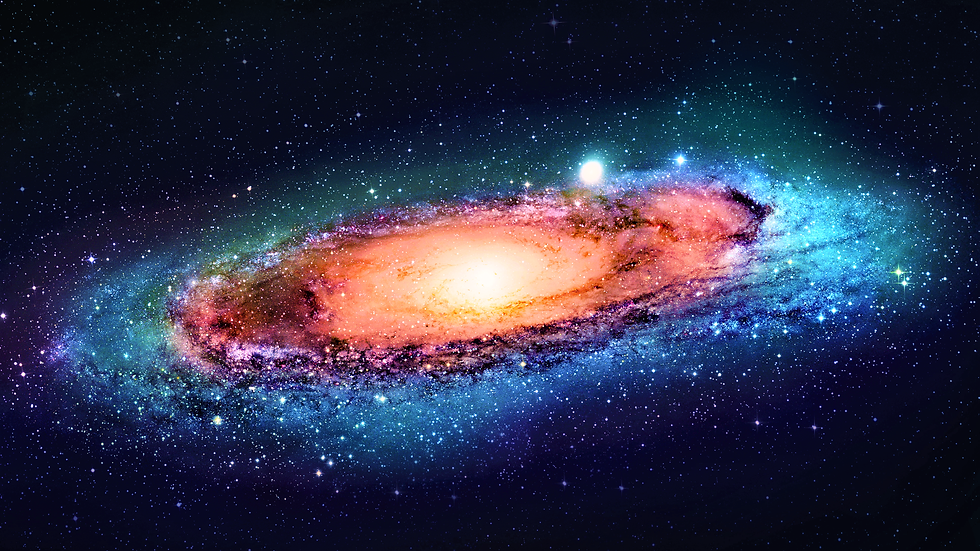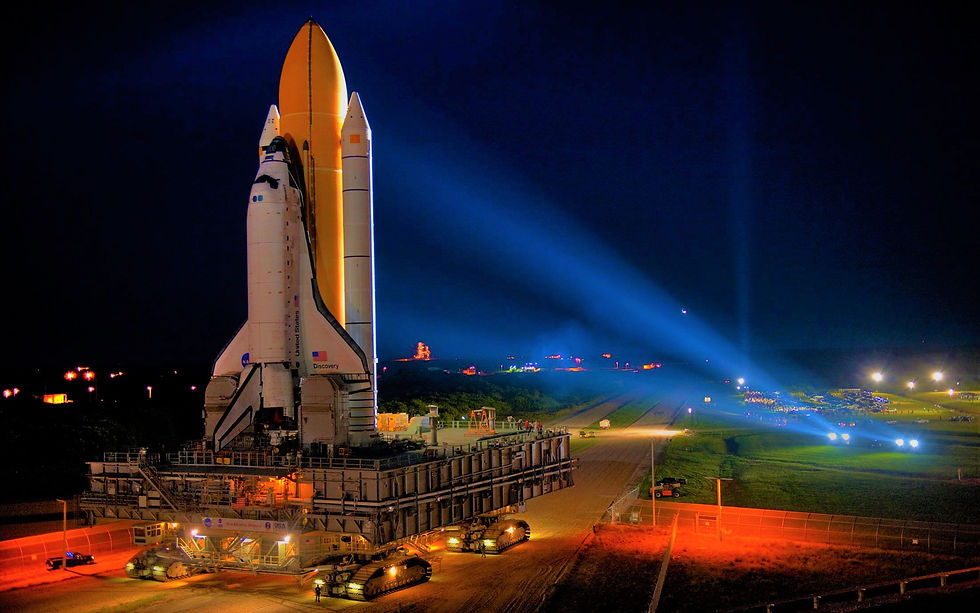International Space Station (ISS)
- pilot55kassas55
- 21 يوليو 2022
- 7 دقيقة قراءة
The International Space Station (ISS) is the largest modularspace station currently in low Earth orbit. It is a multinational collaborative project involving five participating space agencies: NASA (United States), Roscosmos (Russia), JAXA (Japan), ESA (Europe), and CSA (Canada). The ownership and use of the space station is established by intergovernmental treaties and agreements. The station serves as a microgravity and space environment research laboratory in which scientific research is conducted in astrobiology, astronomy, meteorology, physics, and other fields. The ISS is suited for testing the spacecraft systems and equipment required for possible future long-duration missions to the Moon and Mars.
History
In the early 1980s, NASA planned to launch a modular space station called Freedom as a counterpart to the Soviet Salyut and Mir space stations. In 1984 the ESA was invited to participate in Space Station Freedom, and the ESA approved the Columbus laboratory by 1987. The Japanese Experiment Module (JEM), or Kibō, was announced in 1985, as part of the Freedom space station in response to a NASA request in 1982.
In early 1985, science ministers from the European Space Agency (ESA) countries approved the Columbus programme, the most ambitious effort in space undertaken by that organisation at the time. The plan spearheaded by Germany and Italy included a module which would be attached to Freedom, and with the capability to evolve into a full-fledged European orbital outpost before the end of the century. The space station was also going to tie the emerging European and Japanese national space programmes closer to the US-led project, thereby preventing those nations from becoming major, independent competitors too.
In September 1993, American Vice-President Al Gore and Russian Prime Minister Viktor Chernomyrdin announced plans for a new space station, which eventually became the International Space Station. They also agreed, in preparation for this new project, that the United States would be involved in the Mir programme, including American Shuttles docking, in the Shuttle–Mir programme.
On 12 April 2021, at a meeting with Russian President Vladimir Putin, it was decided that Russia might withdraw from ISS programme in 2025. According to Russian authorities, the timeframe of the station’s operations has expired and its condition leaves much to be desired.
Purpose
The ISS was originally intended to be a laboratory, observatory, and factory while providing transportation, maintenance, and a low Earth orbit staging base for possible future missions to the Moon, Mars, and asteroids. However, not all of the uses envisioned in the initial memorandum of understanding between NASA and Roscosmos have been realised. In the 2010 United States National Space Policy, the ISS was given additional roles of serving commercial, diplomatic, and educational purposes.

Structure
The ISS is a modular space station. Modular stations can allow modules to be added to or removed from the existing structure, allowing greater flexibility.
Below is a diagram of major station components. The blue areas are pressurised sections accessible by the crew without using spacesuits. The station's unpressurised superstructure is indicated in red. Planned components are shown in white, non installed, temporarily defunct or non-commissioned components are shown in brown and former ones in gray. Other unpressurised components are yellow. The Unity node joins directly to the Destiny laboratory. For clarity, they are shown apart. Similar cases are also seen in other parts of the structure.

How ISS Generate The Oxygen?
November 13, 2000 -- Many of us stuck on Earth wish we could join (at least temporarily) the Expedition 1 crew aboard the International Space Station (ISS). Floating effortlessly from module to module, looking down on Earth from a breathtaking height of 350 kilometers.... It's a dream come true for innumerable space lovers.
But be careful what you wish for! Living on the Space Station also means hard work, cramped quarters, and... what's that smell? Probably more outgassing from a scientific experiment or, worse yet, a crewmate.
With 3 to 7 people sharing a small enclosed volume on the still-growing Space Station, air management is critical.
Life support systems on the ISS must not only supply oxygen and remove carbon dioxide from the cabin's atmosphere, but also prevent gases like ammonia and acetone, which people emit in small quantities, from accumulating. Vaporous chemicals from science experiments are a potential hazard, too, if they combine in unforeseen ways with other elements in the air supply.
So, while air in space is undeniably rare, managing it is no small problem for ISS life support engineers.
Making oxygen from water
Most people can survive only a couple of minutes without oxygen, and low concentrations of oxygen can cause fatigue and blackouts.
To ensure the safety of the crew, the ISS will have redundant supplies of that essential gas.
The primary source of oxygen will be water electrolysis, followed by O2 in a pressurized storage tank," said Jay Perry, an aerospace engineer at NASA's Marshall Space Flight Center working on the Environmental Control and Life Support Systems (ECLSS) project. ECLSS engineers at Marshall, at the Johnson Space Center and elsewhere are developing, improving and testing primary life support systems for the ISS.
Most of the station's oxygen will come from a process called "electrolysis," which uses electricity from the ISS solar panels to split water into hydrogen gas and oxygen gas.
Left: The ISS's first crew -- Bill Shepherd, Sergei Krikalev and Yuri Gidzenko -- aboard the Space Station. During their four-month stay, the crew will rely on the Station's hardware to provide breathable air.
Each molecule of water contains two hydrogen atoms and one oxygen atom. Running a current through water causes these atoms to separate and recombine as gaseous hydrogen (H2) and oxygen (O2).
The oxygen that people breathe on Earth also comes from the splitting of water, but it's not a mechanical process. Plants, algae, cyanobacteria and phytoplankton all split water molecules as part of photosynthesis -- the process that converts sunlight, carbon dioxide and water into sugars for food. The hydrogen is used for making sugars, and the oxygen is released into the atmosphere.

Scientific research
The ISS provides a platform to conduct scientific research, with power, data, cooling, and crew available to support experiments. Small uncrewed spacecraft can also provide platforms for experiments, especially those involving zero gravity and exposure to space, but space stations offer a long-term environment where studies can be performed potentially for decades, combined with ready access by human researchers.
The ISS simplifies individual experiments by allowing groups of experiments to share the same launches and crew time. Research is conducted in a wide variety of fields, including astrobiology, astronomy, physical sciences, materials science, space weather, meteorology, and human research including space medicine and the life sciences. Scientists on Earth have timely access to the data and can suggest experimental modifications to the crew. If follow-on experiments are necessary, the routinely scheduled launches of resupply craft allows new hardware to be launched with relative ease. Crews fly expeditions of several months' duration, providing approximately 160 person-hours per week of labour with a crew of six. However, a considerable amount of crew time is taken up by station maintenance.
Perhaps the most notable ISS experiment is the Alpha Magnetic Spectrometer (AMS), which is intended to detect dark matter and answer other fundamental questions about our universe. According to NASA, the AMS is as important as the Hubble Space Telescope. Currently docked on station, it could not have been easily accommodated on a free flying satellite platform because of its power and bandwidth needs. On 3 April 2013, scientists reported that hints of dark matter may have been detected by the AMS. According to the scientists, "The first results from the space-borne Alpha Magnetic Spectrometer confirm an unexplained excess of high-energy positrons in Earth-bound cosmic rays".

Freefall
Gravity at the altitude of the ISS is approximately 90% as strong as at Earth's surface, but objects in orbit are in a continuous state of freefall, resulting in an apparent state of weightlessness. This perceived weightlessness is disturbed by five effects:
Drag from the residual atmosphere.
Vibration from the movements of mechanical systems and the crew.
Actuation of the on-board attitude control moment gyroscopes.
Thruster firings for attitude or orbital changes.
Gravity-gradient effects, also known as tidal effects. Items at different locations within the ISS would, if not attached to the station, follow slightly different orbits. Being mechanically connected these items experience small forces that keep the station moving as a rigid body.
Researchers are investigating the effect of the station's near-weightless environment on the evolution, development, growth and internal processes of plants and animals. In response to some of the data, NASA wants to investigate microgravity's effects on the growth of three-dimensional, human-like tissues and the unusual protein crystals that can be formed in space.
Investigating the physics of fluids in microgravity will provide better models of the behaviour of fluids. Because fluids can be almost completely combined in microgravity, physicists investigate fluids that do not mix well on Earth. Examining reactions that are slowed by low gravity and low temperatures will improve our understanding of superconductivity.
The study of materials science is an important ISS research activity, with the objective of reaping economic benefits through the improvement of techniques used on the ground. Other areas of interest include the effect of low gravity on combustion, through the study of the efficiency of burning and control of emissions and pollutants. These findings may improve knowledge about energy production and lead to economic and environmental benefits.

Orbit
The ISS is currently maintained in a nearly circular orbit with a minimum mean altitude of 370 km (230 mi) and a maximum of 460 km (290 mi), in the centre of the thermosphere, at an inclination of 51.6 degrees to Earth's equator with an eccentricity of 0.007. This orbit was selected because it is the lowest inclination that can be directly reached by Russian Soyuz and Progress spacecraft launched from Baikonur Cosmodrome at 46° N latitude without overflying China or dropping spent rocket stages in inhabited areas. It travels at an average speed of 28,000 kilometres per hour (17,000 mph), and completes 15.5 orbits per day (93 minutes per orbit). The station's altitude was allowed to fall around the time of each NASA shuttle flight to permit heavier loads to be transferred to the station. After the retirement of the shuttle, the nominal orbit of the space station was raised in altitude (from about 350 km to about 400 km). Other, more frequent supply spacecraft do not require this adjustment as they are substantially higher performance vehicles.
Atmospheric drag reduces the altitude by about 2 km a month on average. Orbital boosting can be performed by the station's two main engines on the Zvezda service module, or Russian or European spacecraft docked to Zvezda's aft port. The Automated Transfer Vehicle is constructed with the possibility of adding a second docking port to its aft end, allowing other craft to dock and boost the station. It takes approximately two orbits (three hours) for the boost to a higher altitude to be completed. Maintaining ISS altitude uses about 7.5 tonnes of chemical fuel per annum at an annual cost of about $210 million.
The Russian Orbital Segment contains the Data Management System, which handles Guidance, Navigation and Control (ROS GNC) for the entire station. Initially, Zarya, the first module of the station, controlled the station until a short time after the Russian service module Zvezda docked and was transferred control. Zvezda contains the ESA built DMS-R Data Management System. Using two fault-tolerant computers (FTC), Zvezda computes the station's position and orbital trajectory using redundant Earth horizon sensors, Solar horizon sensors as well as Sun and star trackers. The FTCs each contain three identical processing units working in parallel and provide advanced fault-masking by majority voting.





تعليقات